Dear Artist,
“Zombie Formalism” is a catch-all term for that palatable and interchangeable abstraction seen all over the internet, in the galleries, fairs, home interiors pictorials and coming out of art schools for the last decade. First coined in 2014 by artist and critic Walter Robinson in his essay for Artspace, “Flipping and the Rise of Zombie Formalism,” the term attempted to address not an art practice at all; but instead, a collector – a certain kind of deep-pocketed flipper who speculated on young artists making a particular, aesthetically pleasant and decorative, somewhat familiar, art-schoolly painting-type thing. The term whiffed of just enough resentment to be irresistible to other critics and art world denizens, who absorbed it into their own expressions of distaste for the too market-savvy, too intellectually lazy, too feckless, too aesthetically polished work of mostly art school grads.
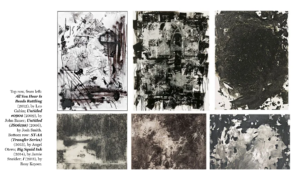
Six works by six artists used to illustrate Jerry Saltz’s article, “Zombies on the Walls: Why Does So Much New Abstraction Look the Same?” for New York Magazine, June 17, 2014.
It’s a shifting term, decomposing like a zombie as I write. Don’t get attached to this description: Z.F draws from the legacy vernaculars of concrete, Ab Ex, minimalism, colourfield and primitivism; and fetishizes process as a substitute for originality or an idea. Think smudges, lay-by blobs, drips, stains and splatters, plus, at times, grids and stripes and corners, monochromes, layering, dots, stencils, Basquiat pastiches of every variation, including text, de-skilled pop, photo transfers, all applied with some alternative, or shrewd, or arts-and-crafts process so as to not look too slick; like sprayed with a fire extinguisher or dipped in a giant trough, broomed or mopped on, or poured with varathane, Home Depot demo-style, or stenciled, or hammered, or taped, or squeegeed, or screened, or spun, or burnt, or melted, or scraped off, or flicked on, or left to dry in the vicinity of a singed forest, or soaked in a polluted waterway. The process is the story, and described like a meaningful existence, in earnest lingo. The image is most probably arbitrary.
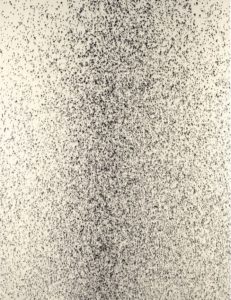
An oft-singled-out offender of zombieism: Two Sides of the Same Coin, 2012, by Lucien Smith (b.1989), “The first-ever painting done using paint applied in a fire extinguisher,” wrote Walter Robinson.
A primary complaint seems to be that the painting sold at Sotheby’s London in February 2014 for $372,000 against an estimate of $66,000–99,000.
Z.F’s offensiveness, at least as much as I can gather from the literature, is that it has been driving a chunk of the market, pervasive at every echelon, and flipped and escalated handily. It is, by all accounts, a product of contemporary art schools and the professional studio assistant layer. It is at once saturating the aggregator sites – both the Walmart-types (their inventory referred to as “crapstraction”) and the sanctioned, auction-driven platforms – and reviled by the decor-averse tastemakers who begrudge their aesthetic opinions being eclipsed by its sheer volume and momentum. For artists, Z.F’s problem should not be attributed to its commercial success, but rather its missed potential; for Zombie Formalism is page one – “the first thought” – of abstraction; and should therefore be visited only briefly on the way to virtuosity; be that in actual connection, in meaning, or at least some semblance of irony, or a subversive and overwhelming immersion, or obscene beauty, in technical superiority, and in revolution. I am clinging, here, to an archaic notion that painters should be tasked with applying themselves to competency in actual ideas, skill of execution, and communication. Z.F shortchanges them by not demanding this achievement. Perhaps, though, Zombie Formalism’s enemies are overlooking the elegant crime being committed in plain sight – that insurrection the critics chronically crave from their creators – which is: breaking painting. (Again.)
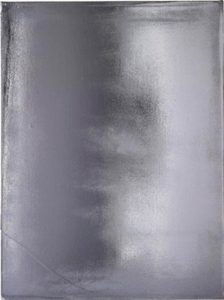
Untitled, 2010
by Jacob Kassay (b. 1984)
“Zombie Formalism gives us a series of artificial milestones, such as the first-ever painting made with the electroplating process,” wrote Robinson, citing Kassay’s work.
Sincerely,
Sara
PS: “Frankly, these days, without a theory to go with it, I can’t see a painting.” (Tom Wolfe)
“What strip mining is to nature the art market has become to culture.” (Robert Hughes)
Esoterica: Don’t fret. Zombie Formalism is composting; and morphing into other zombies: zombie illustrative figuration, zombie fifth-wave nudes, zombie instagram content creator art, zombie neo-puerillism, zombie neo-super realism, zombie neo-brutalism, zombie neo-primitivism, zombie performative process art, zombie thirst-trap, zombie blue-chip clones, zombie regurgitated fashion-celebrity-pop, zombie upcycle, zombie collage, zombie-gift-shop-as-museum-survey, and the peak of greed and cynicism, NFTs, every last one of them, a zombie. Still, who’s to say that the zombies can’t be born of love? “Love,” wrote Tom Wolfe, “is the ultimate expression of the will to live.” And anyway, “no art goes unmediated by other art,” wrote Robert Hughes in his 1991 treatise on modern art, The Shock of the New. “I have never been against new art as such; some of it is good, much is crap, most is somewhere in between.”
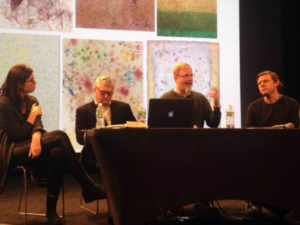
On December 10, 2014, the School of Visual Art in NYC held a panel to discuss zombies, moderated by artist and SVA faculty member Amy Wilson. Panelists included Walter Robinson, art adviser Todd Levin, and artist, critic, and curator Ryan Steadman.
Amy Wilson/SVA photo.
“I’d rather be a lightning rod than a seismograph.” (Tom Wolfe)
Have you considered a Premium Artist Listing? With each letter, an artist is featured at the bottom of this page. The Premium Artist Listings are a means of connecting artist subscribers through their work. Proceeds from each listing contribute to the production of The Painter’s Keys.
“Looking back at art history, aesthetic importance is measured by novelty, by the artist doing something that had never been done before. In our Postmodernist age, “real” originality can be found only in the past, so we have today only its echo.” (Walter Robinson, Flipping and the Rise of Zombie Formalism, 2014)
Featured Workshop
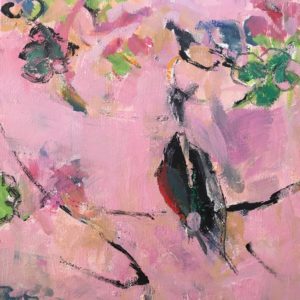 Permission to Paint Expressively Series Session 2
Permission to Paint Expressively Series Session 2
August 22-25, 2022
Join Ellie Harold for “Expressive Painting: Making Your Marks.” With a focus on intuitive mark-making, this workshop is designed to facilitate a fuller expression of your deepest and most essential artist Self. Content, process and lightly structured exercises give you permission to create the art that wants to be made by you in the safe space of Ellie’s studio and the fresh air and cool light of northern Michigan near Sleeping Bear Dunes. You’ll return home with a specific art “care plan” to assure support for “Making Your Marks” in the world. Details and registration at www.EllieHarold.com.
Featured Artist
Creativity has always been my calling however I didn’t realize that it would be primarily art related, until later in my life. Passing on knowledge is also a natural aspect of who I am. For me teaching skills to others is both a continuous joy and a personal education.
I love to draw and to paint with watercolor, pastel and mixed media, but I am also intrigued by the process and challenges of printmaking.
To me, figures and busts in clay just seem to come alive by themselves, in their own three dimensional world.
My subject matter is quite varied overall, but my personal favorites are always faces and figures of all types.

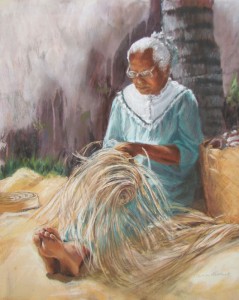
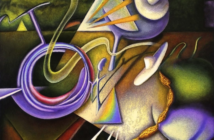
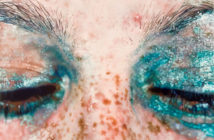
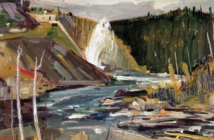
30 Comments
This is hilarious! I have railed , mostly privately, sometimes out loud, against “mediocre” abstraction, which I identified with all the characteristics of Zombie formalism, for years. I just never had such a fabulous term for it. NOW I DO!!! Yippee!
And this is why so many of us who went to University to learn came away with so little. The only class that gave a damn about skill was life drawing, while anything else gave low marks to anything vaguely representational. For me the last straw was an “art class” that consisted of meeting at noon (big hand on the twelve) and then following the arrows in the environment for the rest of the day. Time and money that would have been so much better spent at the feet of artists like your dad.
Don’t forget Greenberg on modernist painting so long ago, that content, be it resemblance or symbolic of anything not two dimensional marks on a flat surface makes a painting less art. This was the last straw, making art an arcane practice, in these capitalism -as -religion times, no different from stock market speculation.
Thank you Sara; you are soooooooooo right. And so was the quote from Robert Hughes: “I have never been against new art as such; some of it is good, much is crap, most is somewhere in between.” I’d go so far as to say that way-most of it is crap, a bit of it is in between, and thank god there is the occasional idea that is good.
I remember in the 1970’s hearing the term
Art Marks – suggesting that there were kinds of mark making that carried Art qualities What I saw were scribble and scratches that seemed to be random I didn’t see where they coalesced into a form of some sort
If you want to see some serious abstraction that is derived from marks on the page that evoke into something serious Look at Chuck O’Connor’s work
And the drawings of Mercedes Matter founder of Nyss
Sometimes critics’ derogatory terms become positive descriptions. French art critic and journalist, Louis Leroy,’ used the descriptive term ‘impressionists’ to dismiss the art of a number of up and coming artists, which then became the very term these artists used to introduce their work to a much wider audience. ‘Zombie Formalism’ may do the same for Walmart and Instagram abstractions but I can’t see artists proud of having their work classed as ‘zombie formalistic’, can you?
Yikes! Zombie Formalism. How fascinating! As this notion is composting, I think we shall find it is a symptom or condition of our global society where there is a great need to be able to play in unstructured ways and still produce something with the least amount of effort possible. We are now experiencing full-on the results of extremely scheduled and organized childhoods combined with high expectations for achievement. We tend to, in the broadest sense, to create and purchase how we live. If free-form-self-directed-play has been denied in the natural part of our human development cycle, it will likely still want to be addressed in the human psyche at another stage. At this point, in at least our North American history, this expressive need or stage of developmental in adults is happening on a population level. Basically, we burned children out on skill development and achievement when they should have just been playing, exploring, making mistakes and building confidence. Now they (and the rest of us) need to hang on for the ride while they make their way through this stage and, with a bit of luck, in their 40’s and 50’s find their way into the deeper work that comes with an inner drive and confidence. The fear is that these highly pressured individuals don’t and we lose the lot to Zombie Formalism, anxieties, prescription and street drugs, suicides and smothering in self-doubts and a kind of mediocre apathy. With our youngest of a collection of eight children now 40, I am more hopeful than this. Mind you, the lot had plenty of unstructured time for the work of play as children. With many of my art colleagues in their 60’s exploring these Zombie process and other colleagues purchasing the art, I say give them the time to play before we are all forced by necessity to dig in and come to grips with what is, by all indications, a perfect storm of climate, geopolitical, and economic disruption. The ease, low skill threshold and lack of commitment to outcomes while still ending up with “something” is likely to end far quicker than anyone of us would like. In the meantime, I shall just keep painting and setting intention and doing the combination of skill and idea based work with as much freedom and drive as I can manage. This is my work and my art. It still has to be done, regardless of the composting of Zombie Formalism around me. Thanks Sara for hosting this conversation. Definitely lots of food for thought.
Thanks for your well thought out remarks. A lot to absorb here. I believe the phrase “Lack of commitment” says it all.
I am not so sure it is truly lack of commitment but more a giving in to fear of failure if there are not immediate results. Whether abstract or representational painting, we know it takes years and often a lifetime to learn competency skills and years more to discover what it is we really have to say in our art. Then, what if what we have to say doesn’t hold any consequence, except to ourselves? This, placed into a societal context that values high achievement measured in money, provides ample support for a Zombie Formalism approach for both artists and art collectors. Flip paint or whatever onto the surface, get it out the door to be purchased where it will be flipped again by the purchaser for even more money. Win-win right? And no one even has to break a sweat on any substantive art level. Isn’t this more appealing than spending a lifetime on honing your craft as an artist or as an art collector while facing the very real possibility that what you have created or purchased is as sought after as Royal Albert old country rose teacups? The less one invests of themselves, it is often surmised, the less one has to lose. I am willing argue that this is simple death by intellectual and emotional numbing mediocrity. However, within this gap, somewhere, somehow, some individuals will surprise us with excellence and vision. Hopefully, it is a surprise for the greater and meaningful good. The rest is just noise which it is best to acknowledge, mined for any gems and cancel out as a possible 100 year distraction.
Your response is exactly where I sit.
I can only do the work I must do, do it as well as I possibly can and grow it in depth and breadth with each and every effort.
Looking at much of the work out there I think, “I can do that,” and it would easy. But, the end result would leave me feeling hollow and not what I want representing me or my legacy when I’m gone.
Here here!
Just great, Sara. A classic for the ages.
Sara, you rang the bell with this post. I’ve been searching to articulate the empty ghastliness of an art world in which work without a soul or a message is lifted upwhile much that breathes languishes. And you show it as hysterically funny as it is. Thank you!
Hilarious. Blame it all on MJ, the King of Pop.
He made us fall in love with those adorable zombies all dancing together in lockstep to a catchy tune.
Ouch! So much for experimentalization and exploring different possibilities and ways to create something “new”. Now I have to wonder: what’s the point? No matter what one tries to do in his/her studio sanctuary will always be subject to criticism.
Agreed with your comments Charmain, but post came up in another post!
I was taught in culinary school: “If the guest wants mustard on their apple pie, you put mustard on it.” Meaning that I paint what will sell. (No, I don’t paint with mustard. ) I don’t share the work I love most. Maybe some day.
I’ve seen this with other artists. My first biz lesson about art was ther’e’s art for the heart and art for the wallet.”
I will apparently be an outlier here. There are many interesting comments here to reflect on in response to Sara’s essay. But the long list of Zombie contenders leaves me cold and feeling I’ve strolled into an elitist space where I have no place – and not sure I want to be. And the following “Featured Workshop,” Ellie Harold’s “Expressive Painting: Making Your Marks,” seems a cruel irony. Unless I’m missing the inner circle humor – and mark.
We’re most likely all in that category, unless, of course, I too am missing the inner circle humor – and mark.
I love this site and learn a lot, however, I am cringing at the imperiosity/imperiousness of the content and comments in this article. Perhaps we need to lighten up, and remember to just have fun with it all.
Basquiat art (of questionable authentication ) is indeed a subject of the news today! I just Googled “Basquiat” and found June 24th (reports within 1-12 hours ago) of FBI removal of 25 works from Orlando Museum, in Florida. It’s quite a story, including possible past sales from $5,000, $15,000, $60,000 for the body of work, with assessed value of $100 million now if authentic.
Art is never a topic to make “light” of — the Impressionist’s work assures.
Who am I to say what is art? I am a representational painter and I take the scene literally. There are those who say that a literal take on the world is not art and lacks imagination.
Who am I to say that the Zombie Formalism isn’t art? Who’s to say that covering a naked woman’s body with paint from a paint roller and telling her to roll around on a canvas isn’t art? How about spreading peanut butter on canvas? In the 50s I didn’t call it art. I thought it was schlock. I still think that. But there are those who will pay a fortune for Jackson Pollock’s work. He is considered an example of modernism.
What’s to say these ZF’s aren’t going to be the future leaders of the art world with their nihilistic form of art? Maybe the fire extinguisher was their way of expressing some emotion that they called art. How many artists have used similar processes and become famous.
Beauty—or investment—is in the eye of the beholder. Who are we to judge their opinion, even if we see no value in it?
It is wrong to criticize artwork based on our emotional feelings toward the piece. As artist, we must be tolerant of the works of others and the acceptance of their work. Jealousy is a terrible thing. Let them do their thing and let us do ours.
Thanks, my thoughts exactly.
I’ve been making non-objective abstract paintings for 45 years. You could call my style painterly abstraction. As a teenager I loved post-impressionist, German expressionist and surrealist art. In art school I loved abstract expressionist art and art brut. I love contemporary art like that of Albert Oehler, Per Kirkeby, and Amy Sillman. I’m also influenced by philosophy: existentialism, and the Tao. I think a lot about the meaning of my art and my understanding of it deepens and gains clarity as I age. I’m a “process painter” for sure. My work continues the tradition of automatism and spontaneous mark making. I’m hooked on experimenting with color relationships and creating tension in the painting through the counterpoints of illusion of depth and literal flatness, beauty and ugliness, control and abandon. I love layering. It takes a few months or more for me to finish a painting and it never is totally resolved. Like life, it’s in flux. I seek to have my work connect with the viewer, to inspire, commiserate, mourn, celebrate, share quiet joy.
Is this Zombie Formalism?
If not, what makes it different?
Hi Susan
I think you’ve answered your own question by telling us how thoughtful and self-exploratory your work is. My own work is very different from yours but we share common painterly/expressive interests which you set out very clearly.
It seems to me that Zombie Formalism (a new but useful term to me) is practiced by those who are simply aping the work of others in the hope of achieving popularity and sales. That’s clearly not you. I think some of the other comments here miss the central point which is to do with artistic integrity.
Exactly!
I’ve been following this thread with interest, and hear a lot of defensive posturing.
On my art journey I went through a phase of layered, stenciled, scrufito, abstraction.
The exploration was very mindful and has lead me to where I’m at today with textured semi abstract landscape.
There was no mindless Zombie, it was all very deliberate.
IMO
That’s the difference, thinking, playful exploration vs slapping stuff together to make a commercially viable product.
Commerce is good, I need to eat, but in my heart I can’t call that kind of work art.
I ADORE Per Kirkeby! His work has that unmistakable magic that try as I might, I cannot get close to painting like that. Having gone from representation to abstraction and back many times over a lifetime of printmaking and painting, I prefer to keep an open mind and use my imagination.
As luck would have it, I had a great art teacher straight out of High School at UC Irvine back in 1968, in the form of a wildly rebellious young artist called David Hockney. I signed up for all his classes and have been following him as he exhibits in museums internationally and in videos ever since. This artist has given me the best advice about art, both practically and philosophically in my lifetime: Try every medium, buy the best materials you can afford, and above all, keep working day in and day out no matter what.
Observe. Different methods of depiction are fair game. Don’t work from photos, work from life. Why are Europeans so hung up on verisimilitude, whereas Japanese, Chinese, Asian and African art get to the heart of the subject without rendering a photographic likeness?
I find it heart warming that this artist is one of the most famous painters in the world today, yet he still paints his humble landscapes outside like the rest of us (okay he has people to drag his easel and stuff out to the garden). In his eighties, he still going strong, still connecting to other artists all over the world.
In a world of Zombie Formalism and Orlando Fake Basquiets, it’s a breath of fresh air when an artist talks about the importance of light and shade and observation of a subject in drawing. Keep one’s feet on the ground, keep painting.
I totally agree with your comments. Do we really need more criticism in this world? Even impressionism was considered outrageous when first introduced. It’s sad if an artist can’t feel free to try all kinds of mediums and techniques. How about combing styles, the new with the old if they wish; am sure some would consider that outrageous! Isn’t it more important for the artist to enjoy creating and love what they do instead of painting what they think they “should” do, or what art critiques consider to be “real” art? I appreciate some art more than others, but sometimes, just a combination of colors or shapes can evoke an emotion to make a painting a masterpiece in the eye of the beholder. Seems like the buyer is the one who can decide, to buy or not!
My reply was to Charmian Mclellan.
What a fascinating, perfectly-timed post!
I’m currently taking a class that could, technically, fit into this criticism – it’s all about accessing emotion and painting using every conceivable mark. We are encouraged to let loose, to discard formal realism. (I think the following weeks will show us how to bring more formal aspects like value, contrast, composition, etc, into the mix to keep it from becoming ZF. )
I have always struggled to make abstract art because it’s threatening to me. How do I know if it’s any good or if it’s ZF? How do I know in my own work or in anyone else’s? Am I being tricked? Is it crap or is it genius? I get angry every time I stand in front of Pollock’s work because I don’t get it!
And as for making my own abstract work – I’ve stopped before I could start because I don’t know how to “judge” it or gauge its worth.
This article didn’t answer my questions at all, but it sure gave me more grist for my mill! Thanks, Sara, for opening this question up even wider in my mind!